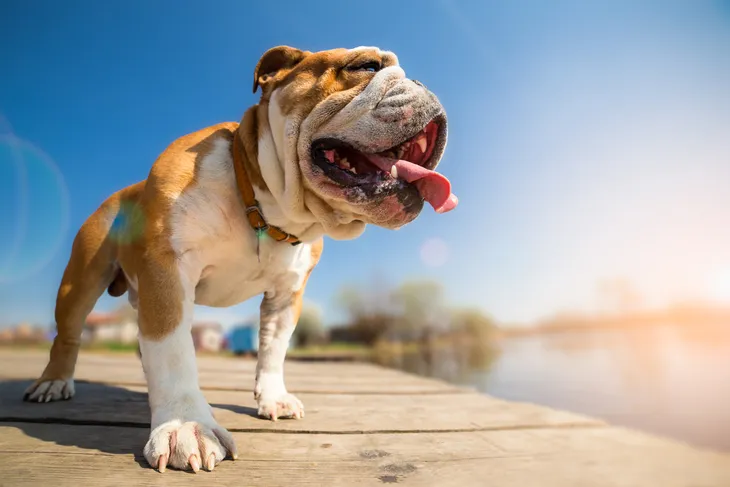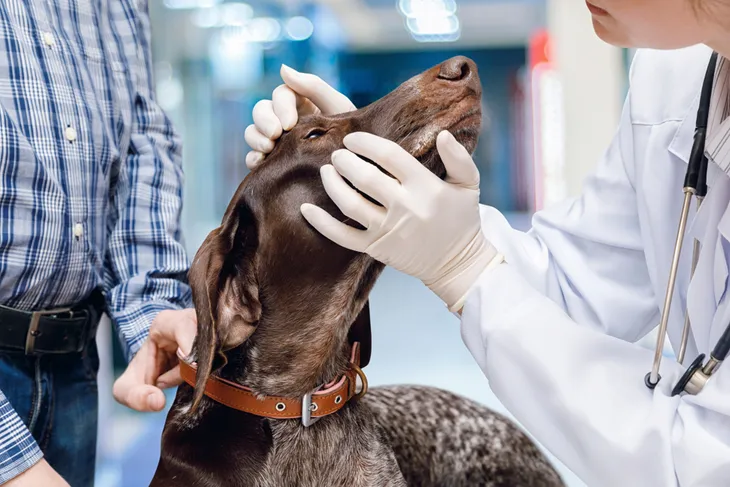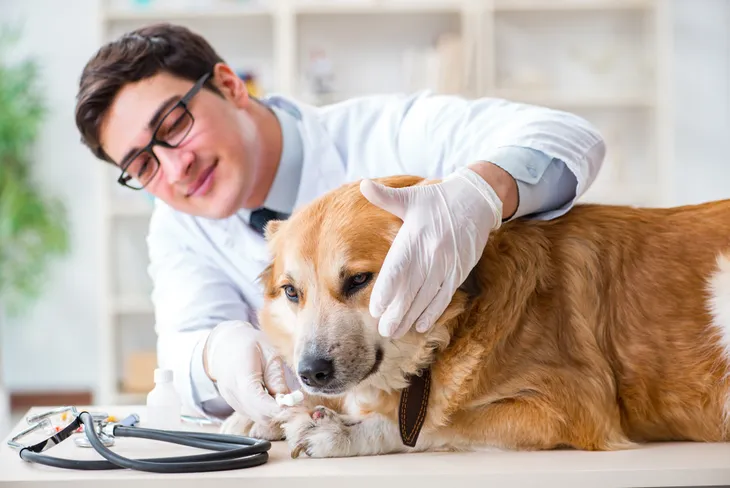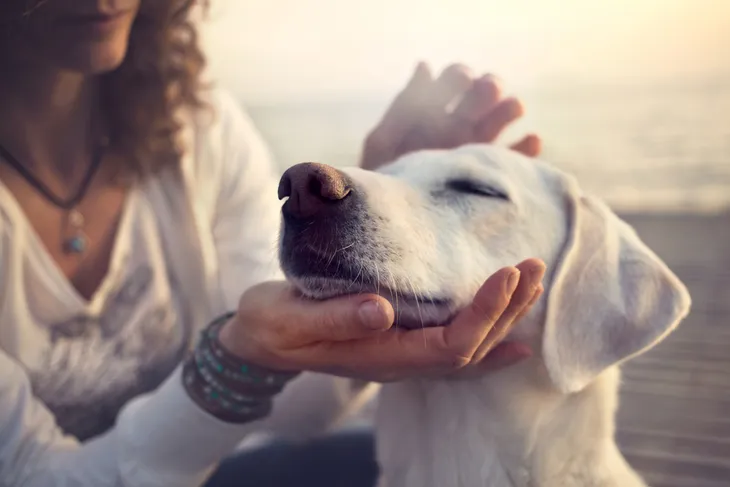- Summer is a fun time of year but there are seasonal hazards like sunburns you need to be mindful of.
- The best way to protect your dog is to get informed.
- Protecting your dog from sunburns is vital as repeated occurrences may lead to sun cancer.
Summer can be fun for both you and your dog. There are ample opportunities to get outdoors and enjoy the sunshine whether that’s heading to the lake, playing fetch in the yard, or simply taking your furry best friend for a stroll around the neighborhood. While you lather on your sunscreen, you might be wondering, does my dog need to be protected too? Can dogs even get sunburns?
These are all important questions to ask and we’ll get to the bottom of them in this article. Protect your dog’s health this summer by getting informed. Here’s what you need to know about sunburns in dogs.
Can Dogs Get Sunburns?
The short answer is yes; dogs can get sunburns, just like humans. Like us, dogs are sensitive to the sun’s ultraviolet rays, and too much sun exposure, especially during the peak of the day can cause your dog’s skin to burn. When this happens your dog can experience painful symptoms which is why you’ll want to do everything you can to protect their skin.
The best way to protect your dog from sunburns is by getting informed. So let’s explore which dogs are most susceptible to sunburns next.
Are All Breeds Susceptible to Sunburns?
Sunburns can affect all types of dogs, however, white dogs with short or thin fur are most susceptible, such as French bulldogs, pit bulls, bull terriers, greyhounds, and boxers. Hairless breeds like the Chinese Crested are also prone to sunburns.
Even dogs with thicker fur or darker skin can get sunburns, particularly in areas where the fur is lighter or skin is more sensitive. Be extra mindful of their belly, ears, and nose.
Signs of a Sunburn in Dogs
According to Wag, sunburns are acute in nature and usually develop within 1-hour following sun exposure and peak within 3-days. The telltale sign of a sunburn is reddened skin that may be painful. If your dog is showing signs of pain after being outside, check their skin for signs of a sunburn.
The source also says the most commonly affected areas include the ears, nose, skin around the eyes, and the back of the dog. If the sunburn is severe, inflammation and blisters can develop. You should also be on the lookout for signs of weakness as this may indicate heat exhaustion which is a medical emergency.
Long-Term Complications
The short-term effects of sunburns are acute pain and reddened skin but repeated bouts of sunburn can have serious complications. All About Pets Animal Hospital and Veterinary Clinic explains, “with continued exposure, nodules and bumps may develop.”
Sunburned dogs also often scratch or lick the affected area, which can cause thickened skin and may lead to bleeding of the lesions. Additionally, there’s also the risk of skin cancers, such as squamous cell carcinoma, malignant melanomas, and hemangiomas.
Diagnosing Sunburns in Dogs
If you think your dog has a sunburn, take them to the veterinarian to be examined. Your vet will examine their skin, discuss their symptoms, and talk about their medical history to diagnose a sunburn.
According to Wag, “Your pet’s presentation and recent behavior such as time spent in the sun, coat type, and skin pigmentation will often be enough for a clinical diagnosis to be made.” In severe cases, your vet may check for signs of a chemical burn. The source says chemical burns typically follow a splatter pattern whereas a sunburn usually develops evenly across your dog’s skin.
How to Treat Sunburns in Dogs
As soon as you notice your dog’s skin is turning red or warm you should move them into the shade or indoors as soon as possible. To help soothe a painful (but minor) sunburn, the American Kennel Club (AKC) says you can apply cool compresses and ointments, such as aloe.
If the burn is severe, you need to contact your vet “because treatment with a cortisone product may be needed to prevent inflammation,” explains the source. If a secondary infection is a risk, your vet may prescribe antibiotics.
Do Dogs Need Sunscreen?
According to PetMD, yes, you should put sunscreen on your dog. Richard Goldstein, DVM, and chief medical officer of the Animal Medical Center in New York City, tells the source, “It’s actually very important to put sunscreen on dogs, especially those with light skin and white fur or hair.”
If your dog will be outdoors during peak sun exposure, which is typically between the hours of 10 am to 4 pm, then the source says sunscreen should be reapplied throughout the day. Pay close attention to sun-sensitive areas like their nose, tips of the ears, and belly — anywhere their fur is thinner. Dr. Goldstein also tells the source that you should reapply sunscreen after your dog goes swimming.
How to Choose a Sunscreen for Dogs
When choosing a sunscreen for your dog, it’s vital that you pick one that is specifically formulated for canines. If you’re having difficulty finding one, talk to your vet to find out what they recommend.
Millie Rosales DVM, DACVD, of Miami Veterinary Dermatology tells PetMD that you could also use a broad-spectrum sunscreen formulated for babies with an SPF of 15 or higher. However, it is vital that you read the label as not all sunscreens are created equal. Since dogs are prone to licking their skin, you need to make sure you choose a sunscreen that doesn’t contain toxic ingredients. Dr. Rosale says to choose a sunscreen that is fragrance-free and doesn’t contain zinc oxide. If you go this route, it’s best to discuss it with your vet first, to ensure the sunscreen is safe for your dog.
How to Apply Sunscreen to Your Dog
Once you’ve found a suitable sunscreen it’s important to do a patch test before applying it to the entire body. This involves applying the sunscreen to a small area on their body to make sure they don’t have a reaction to the sunscreen. If there is no reaction, and it’s a dog-safe sunscreen, you can apply it to your dog.
Rub the sunscreen gently into their skin but when applying it to their face, take extra care to not get it in their eyes. After applying the sunscreen, allow it to soak in for a few minutes before heading outside. Also, keep an eye on your dog and make sure they’re not licking the sunscreen.
Other Ways to Prevent Sunburns
If you can’t find a dog-friendly sunscreen or want to take extra precautions to protect your dog from the sun, you do have other options. The AKC says you can consider protective clothing. There are many sun shirts or suits designed for dogs that can help cover large areas of their body and provide UPF protection. Sun shirts can also help protect your pooch from pesky bugs like mosquitoes.
The source also says hats and goggles are available to protect your dog from the sun. You can also reduce their sun exposure by keeping them in the shade when spending time outdoors.
Beware of Heatstroke
Heatstroke is a serious risk when your dog spends time out in the sun and all dogs including puppies and seniors are at risk. The best way to protect them from heatstroke is to reduce their exposure to the sun and heat.
When playing outside, give your dog plenty of access to fresh, clean water and shade. If it’s too hot, you’re better off staying indoors.
It’s also important to know the signs of heat stroke so you can get your dog help as soon as possible if it happens. The AKC says warning signs of heatstroke in dogs include panting, drooling, a rapid pulse, and fever.
Other Summer Safety Tips to Consider
Summer is a fun time of year, especially for your dog because it often means more outdoor time. Along with protecting your pup from sunburns, there are other summer safety tips to keep in mind.
For starters, it’s vital that you provide your dog with plenty of water. Summer is hot so be sure to keep a bowl inside and fill up a fresh dish when you’re outside. If you go for a walk you should also bring water with you to keep your dog hydrated. It’s also vital that you never leave your dog inside a hot parked car, not even for a minute. If they can’t go to places with you, they’re better off staying at home.
It’s also important to be mindful of hot surfaces like hot asphalt and sand as this can burn your dog’s paws. If it’s too hot for your hand, it’s too hot for their paws. Finally, if the weather is too hot, keep your dog cool by avoiding strenuous activity altogether.















